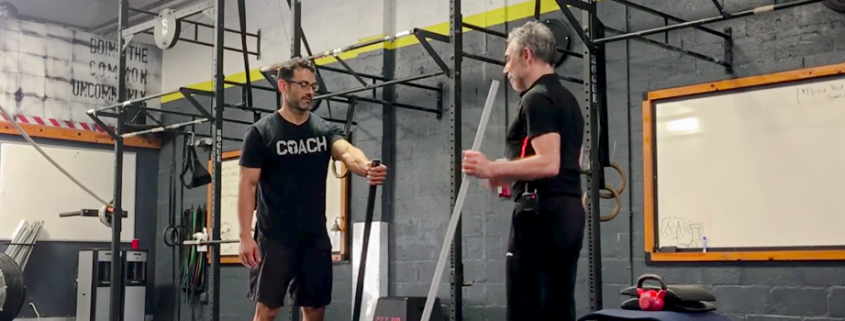Theory & Practice: Flexibility vs Stretching
In general, people have the impression that flexibility = stretching. That flexibility is just as simple as stretching your muscles in order to lengthen them to get a bigger range of motion. People misconceive that after stretching, we can relax our muscles, and by doing this, prevent our injuries.
This is what we have been taught, educated by press, articles and books in the fitness field. There is a long-standing misunderstanding of what flexibility is all about.
FLEXIBILITY ≠ STRETCHING
Flexibility
Flexibility, (“flex” means “bend”, or ability to bend) as a bio-motor capacity, is the ability of your joints to bend during movement. This is provided by three elements: joint mobility, elasticity of tendons and ligaments, and ability of our muscles to relax, which allows us to increase their anatomical length.
Mobility of joints is something we mostly inherit, so development of joint mobility is a difficult task. The situation with ligaments and tendons is better, because of their ability to increase their length through elasticity. However, there is a limit to both elements because of their autonomy from the influence of our brain, which cannot regulate their state of flexibility.
Muscles, on the other hand, are directly connected with the brain and their most important function is to contract and relax. Knowing this, we can assume that we can directly and indirectly regulate muscle relaxation during movement.
Stretching
I could not track down the origin of the reason for association of this term with flexibility. Perhaps, it came from a visual image of flexibility exercises, where it looks like we are pulling our muscles to make them relax. I don’t think our muscles like any violent approach to making them relax. On the contrary, our muscles do not like any special efforts made to lengthen them and react to these attempts by becoming tense; the muscles contract in order to prevent hyperextension, as you can probably recall from your own experience. Nevertheless, millions of people exercise stretching, moving in the wrong direction of damaging their own muscle tissues.
Muscles contract and relax. When you stretch them – they actually lose a bit of elasticity for a brief period, so you intently and intentionally weakening your musculoskeletal system instead of strengthening it. Stretching your muscles on regular basis will have lasting effects, but not the ones you’re looking for.
Why don’t our muscles work this way? Because they obey your body’s movement as a whole, where muscle activity and relaxation is used to serve the desired movement. So our muscles contract or relax according to the body’s needs to make this or that movement, but not as an isolated function. When we just “ask” them to relax, by stretching them in a separate movement, they do not understand this action. Our brain does not allow the muscles to stretch independently without their involvement into the movement of the body. Pulling your own muscles is the straight way to injuries or to muscle soreness, at the least.
Try our full flexibility development program. Start your FREE TRIAL now >
How to Develop Flexibility
What would be the best way to develop our flexibility? First of all, do not stretch your muscles – ever. What I propose for this matter, I call, “Action Flexibility”. The essence of it is very simple, work with or through your mind.
Your ability to bend is achieved through your mind and muscles. It involves them into the movement you want to do. Muscles will contract & relax on their own. This will produce the movement, or relaxation in their reciprocal relationship, so that not to resist the movement being performed.
Therefore, our brain makes this precise regulation about which muscle is supposed to work and which is supposed to relax. Following this simple logic, we can see, that our ability to relax and flex depends on how much we can focus on production of the movement, without any consideration of muscle tension or relaxation.
Try This Exercise
Do a simple test by bending forward, keeping the knees straight, in order to touch the floor with your fingers or hands. First, what will cross your mind, will be a concern about the hamstring muscle tension, which gives you a signal that this movement is a dangerous activity. This is normally what your body’s and mind’s reaction is – a safety issue, a survival instinct.
But you have to be free from these precautionary reactions and keep your focus on the action (doing) of what you want to do, which is to bend forward and touch the floor with your fingers. To put simply, worry about touching the floor, not stretching your muscles. Certainly this action requires you to overcome your basic reflex – fear, but this the only true way to develop your flexibility. Do not stretch your muscles – do the action, touch the floor!

 Pose Method Inc
Pose Method Inc

 Pose Method Publishing, Inc
Pose Method Publishing, Inc
I don’t understand why stretching is useless in order to better muscles flexibility and to reduce muscle stiffness. I never do stretching after my running training (but my coach says that it is important); I do stretching at home 2 or 3 times at week. I read this article on pose method site and it seems to me that to stretch a muscle (like to take the foot and pull it back up to the buttock for 30 seconds) it’s useless in order to stretch the muscle (the femoral quadriceps). But if i have problems of muscular flexibility (muscles stiffness), which exercises have i to do to better those problems? On Posetv channel on YouTube there are exercises showed by you as flexibility routine, but for me are to difficult. So, classic stretching exercises are useless? Thanks 😊